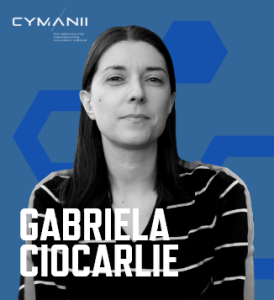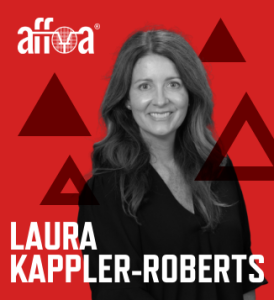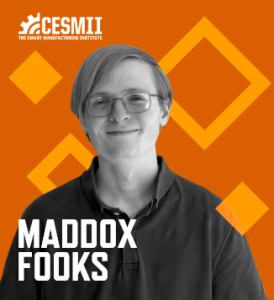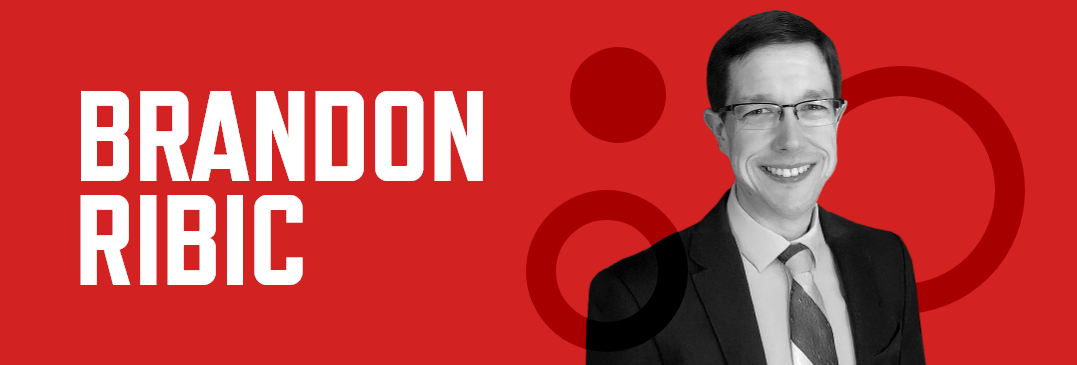
Strategic Thinker, Life-Long Learner, Leader
Brandon Ribic’s career has been built on the cutting edge of materials science and advanced manufacturing. As the Technology Director at America Makes, the national additive manufacturing (AM) innovation institute, he leads strategic research and development efforts to accelerate AM technologies. His role centers around curating the national AM Technology Roadmap and driving standardization efforts through the Additive Manufacturing Standardization Collaborative with the American National Standards Institute (ANSI).
With over 15 years of experience in materials processing, Brandon’s expertise spans industries from rail and oil to aerospace and defense. He joined America Makes in 2019, bringing a deep technical background and a history of innovation. Prior to this, he worked at Rolls-Royce Corporation, where he focused on additive manufacturing of nickel superalloys for production and repair. He not only led externally funded research but also helped strengthen ties across the defense aerospace supply chain.
Brandon earned both his bachelor’s and Ph.D. in Materials Science and Engineering from Penn State. His doctoral research, which involved numerical modeling of fusion welding processes, laid a strong foundation for his later work in laser-based metal AM. Early in his career, he held multiple roles at a machining manufacturer, gaining valuable experience in manufacturing operations, quality, and workforce development.
Today, Brandon brings that broad experience to national-level leadership. He has served in key roles with America Makes and the American Welding Society, has been published in leading journals, and regularly shares his expertise on global stages. With multiple patents in AM and laser processing, Brandon continues to shape how advanced manufacturing evolves—and how it can be scaled for impact. For these contributions, Brandon Ribic is a Modern Maker.
Q&A with Brandon
How did you find your way to working in advanced manufacturing?
My journey in advanced manufacturing began in high school with the help of my chemistry teacher. In addition to teaching chemistry, she offered a course called Science Research. The course offered mentorship opportunities for students to conduct research on a variety of topics. I was fortunate to work with a PhD graduate student at a local university, who happened to also be my teacher’s husband. My research was focused on developing a lead-tin binary phase diagram. The experience was a great introduction to the importance of this material system for soldering applications. I was fortunate to receive a variety of awards and recognition for my research. One of these awards was from ASM International. I was invited to attend the first ever Materials Camp in 2000. The camp introduced me to a variety of materials and manufacturing topics and was an experience I will be forever grateful for and never forget.
From there, I knew I was going to school to study Material Science and Engineering with a focus in metals. Throughout my undergraduate and graduate school experiences I found a passion for materials processing from internship opportunities which provided me exposure to casting, forging, and welding. Once I finished graduate school I spent the first few years of my career working in a foundry manufacturing ingots for oil, energy, and gas applications in addition to cast rail components. I then spent the next seven years of my career in applying my knowledge of welding, manufacturing, and materials processing in aerospace research and development for gas turbine applications. All of these experiences helped me to develop my skills and expertise which have led me to my current role at America Makes.
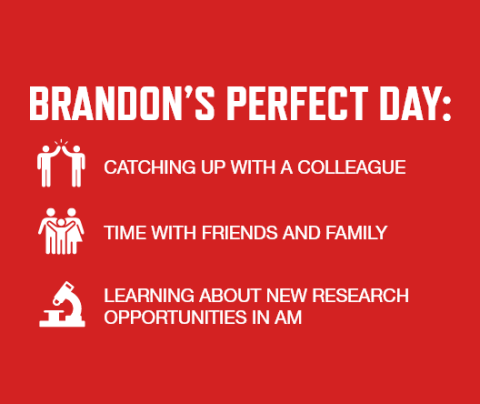
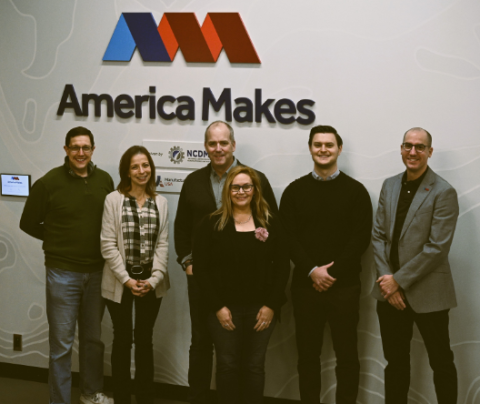
What is the most challenging part of your job?
The most challenging part of my job is likely the most fun and exciting part as well. I am very fortunate to be in a role where I am constantly learning. This means I am often asked to work on challenges or issues which no one really knows the exact right answer. For some people this may be unusual or even a little scary, but I find it exciting and enriching. I enjoy learning with others. I am lucky to work with many individuals from industry, academia, and government. The teams I help lead and collaborate on are always trying to understand the current state of additive manufacturing technology. My job commonly challenges me to understand what more we (the AM community) can be developing and delivering to advance the state of our understanding. It is very important that the lessons learned from the research portfolio I help manage are appropriately communicated with the supply chain. I really enjoy discovering new ways to share what we are learning as a result of the efforts of America Makes. I have enjoyed the challenge of learning how to communicate technical information to various audiences in a variety of media forms.
What is the best part of your job?
The best part of my job is the time I am afforded to reflect on how far AM technology has evolved over the course of my short career. I am happy to share with those who are new to the field how aspects of AM technology have evolved and share the key lessons learned. I am really grateful for all of my experiences which I can share to help raise awareness across the AM community in order to help coordinate our next steps in order to accelerate the maturation and industrialization of AM technologies.
What would people be surprised to learn about manufacturing or your role in manufacturing?
While I am afforded a lot of access to data and information, I don't actually do any research myself. The teams I work with are conducting research at various organizations within the supply chain. The role of the team I help lead is to identify opportunities where there are gaps in the technology landscape which is then used to focus the objectives of future research projects. I work more with people now than AM equipment, material samples, and microscopes.
What advice do you have for someone new to the industry or considering manufacturing as a career?
Be open to new experiences, take chances when they are available. There is probably more you can achieve than you may initially believe. Communication is very important. At some point you will rely on others or they will rely on you, so be sure to learn how to work and communicate with teams. Sometimes this may mean you have to deliver news not everyone may want to hear, but honesty and transparency are important. Speaking on what you know or what you don't know is ok. Sometimes you learn a lot by learning what you don't know. Never stop learning. It is important to find what intrigues you and do it to the best of your ability.
What makes you excited to go to work on Mondays?
Contributing to a team which I see is making a difference on a regular basis. It is very rewarding to watch others learn and to observe how people's understanding is growing in a way which benefits the wellbeing of our nation.
What are the three most important skills for your job?
Listening, critical thinking, and communication
If you didn’t have to work, how would you spend your day?
I would spend more time with friends and family. I would probably spend more time traveling with my family and pursuing hobbies. I would likely have a lot less on my to do list in terms of home improvement projects as well.
What activity gives you the most energy?
Learning and experiencing new things with people (my family, colleagues, and friends).
What hobbies make you better at your career?
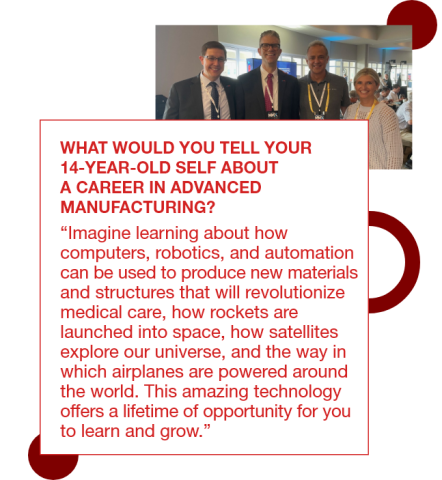
Reading to learn (not always for pleasure), working on my own cars has taught me a lot, I have learned a variety of skills from home improvement projects. Building Legos and furniture can require attention to detail and help develop familiarity working with a detailed set of instructions.
How does the work you do impact the world?
My work has contributed to government policy for the use of additive manufacturing. It has delivered guidance and technologies which enable how additive manufacturing can be utilized as a distributed manufacturing capability. It has changed how additive manufacturing is utilized for repair of gas turbine engine components. It is changing the way in which additive manufacturing is being used for the development of new materials and products. It is changing the way castings and forgings are manufactured in the U.S. I have been lucky to contribute to how the world responded to the COVID-19 pandemic utilizing additively manufactured personal protective equipment. My efforts have affected how people think about additive manufacturing of medical devices, airplanes, and rockets. The work of my team has impacted a number of widely used AM design softwares, AM organizations, and AM standards.


